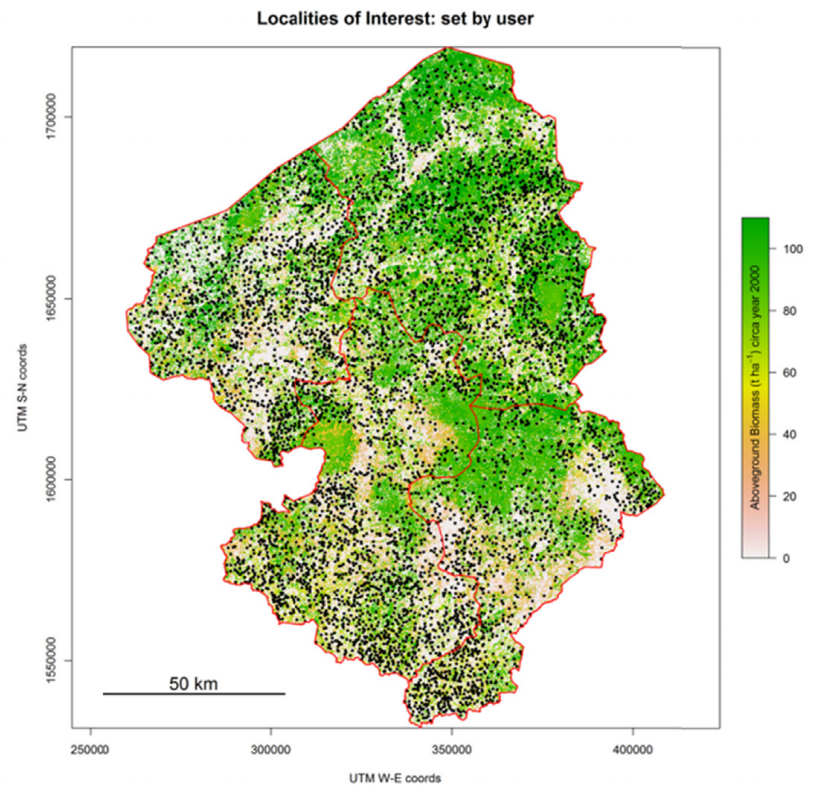
PROGRAMME
You are invited to a one-day course to learn about quantifying carbon savings from fuelwood reduction interventions using the freeware MoFuSS. The course will be given in English on September 3rd and in French on September 4th; between 08:30 and 17:00.
Course Description:
The training course is based on a modeling tool called MoFuSS (Modeling Fuelwood Savings Scenarios). MoFuSS was designed to assess fuelwood-driven degradation in a variety of contexts. In short, the tool is a landscape-level computer model that simulates fuelwood harvesting in space and time, and expected regrowth of the vegetation. By means of what-if scenarios embedded within dynamic landscapes, MoFuSS can be used to account for savings in non-renewable woody biomass from reduced fuelwood consumption. Practical exercises will be conducted using datasets from Mexico and Central America, Kenya and India.
MoFuSS was developed during one of the Global Alliance for Clean Cookstoves (GACC) projects between 2013-2015: Geospatial Analysis and Modeling of Non-Renewable Biomass: WISDOM and beyond. It was built for GACC partners and other stakeholders to assess fuelwood-driven degradation in a variety of contexts.
Objective:
Train up to 70 people (35 each day) in fuelwood modeling techniques using available data and freeware. The underlying objectives of simulations are 1) to better understand where and when fuelwood could be a driver of forests and woodland degradation in terms of aboveground biomass density and 2) serve as a decision making tool, informing local policy makers and practitioners working in the field.
Target audience:
Anyone interested or in the need to quantify carbon savings from fuelwood reduction interventions (e.g. clean cookstoves, fuel switching, etc.). No GIS or programming skills are needed when running the model using provided default datasets.
Registration and fees:
Register using the online form. In case of overbooking, participants will be selected by their registration date. The course has no cost for everybody.
Outputs and Expectations:
MoFuSS has six different levels of interaction with end-users according to their expertise with spatial analysis and modeling software and techniques. The main expectation of this course is that attendants manage to build scenarios with MoFuSS for any of the provided datasets by means of a user-friendly interfase (up to Level 3).
